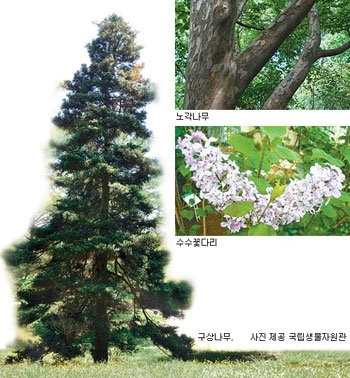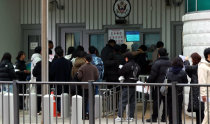Korea Losing Rights Over Indigenous Wildlife Species
Korea Losing Rights Over Indigenous Wildlife Species
Posted February. 24, 2010 08:07,

When inter-Korean tension heightened due to the killing of a South Korean tourist by a North Korean soldier at Mount Kumgang in 2008, the restoration center for endangered species on Mount Jiri was at a loss.
The center is working to save the Asiatic black bear, an animal native to the Korean Peninsula. North Korea is the only place to import the rare species, so the center has keen interest in inter-Korean ties.
In the past, the center had secured the bears from China and Russia as a pure breed and released them into the wild around Mount Jiri. It did so because bears in Primorsky Krai of Russia and Jilin province of China are genetically similar to the Asiatic black bear.
Since Russia and China banned the export of plants and animals, however, the center has relied on North Korea for the bears.
The move by Russia and China is part of a race for biological resources, in which every country seeks to benefit by utilizing its own distinct biological resources. In the past, biological resources were deemed a common asset of all humanity, and those who used a certain plant or animal first could claim ownership.
Since the 1993 adoption of the Convention on Biological Diversity, however, biological resources have become a countrys national asset. In addition, an international convention on the protection of biological resources will be adopted this year.
○ Biological sovereignty in crisis
South Korea has failed to protect its own biological resources. Domestic plant experts say they feel regret whenever they visit Arnold Arboretum in Boston.
Some say they feel like they are seeing Jikji, a Korean Buddhist document published using the metal printing method for the first time in the world, displayed at the National Library of France. This is because the arboretum has a host of plant species native to Korea commercialized in the U.S.
In 1917, the Korean tree species nogak was collected by Americans, sent to the U.S., and developed into a luxury garden tree. Another Korean tree gusang was taken to the U.S. and Europe around 1904 and became a Christmas tree.
Miss Kim lilac, a popular species accounting for 30 percent of the global lilac market, is the enhanced variety of the native Korean species syringa velutina. An American plant collector belonging to the U.S. military government office in Korea improved the variety in 1947.
More plant and animal species indigenous to Korea are in danger of being taken abroad. The Environment Ministry in Seoul says Korea has about 100,000 biological species, of which only 30,000 have been identified as Korean through surveys.
Korea cannot claim its ownership of the remaining 70,000 though they are transferred to and commercialized in foreign countries.
○ Preparation for patent war
A team of researchers at Jeonju University in North Jeolla Province led by professor Kim Hyeon have traveled to Gimje and the counties of Jangsu and Buan in North Jeolla Province to gather folk plant remedies since August last year.
Kim said he heard that when cows have no strength and refuse to eat, the pulverized root of haneultari is effective, adding, Kidney beans prevent maggots from growing in fermented soybean and hot pepper paste. They are a natural insecticide.
The professor will create a database of folk remedies based on the teams research. He has collected 85 remedies using 52 plant species indigenous to Korea.
Kim began his research to prepare for a patent war on biological resources. He said if the country has document records on domestic species, Korea can win the war against foreign companies that produce goods using Korean plants. In other words, Kim wants to create a list of Koreas biological assets.
India canceled the patents of a U.S. company that developed a medicine for wound treatment and insecticide using the Indian trees turmeric and neem. New Delhi did so since it had documents showing that the Indian people have long used the trees for the same purposes.
○ Biological resources dispute to begin in October
The conflict over biological resources will be on the negotiating table in Nagoya, Japan, in October. The fate of an international agreement on ABS, an access and benefit-sharing regime of biological species, will be determined at the 10th meeting of the Conference of the Parties to the Convention on Biological Diversity.
If the accord is adopted and becomes binding, the landscape of the global biological industry will undergo a seismic change. So if one country takes anothers biological resources to make goods, the country should clearly say from the commercialization stage that it is using the others resources.
By doing so, the agreement helps a country with resources to gain benefits, meaning the value of biological resources will increase down the road.
The October meeting will determine the scope of ownership, the subject of profit sharing and methods, and the timing of ownership implementation. These issues will significantly affect the global market for biological resources worth an estimated 300 billion U.S. dollars.
nex@donga.com



![화장실 갇혔을 때 생존법…“최후에는 변기뚜껑” [알쓸톡]](https://dimg.donga.com/c/138/175/90/1/wps/NEWS/IMAGE/2025/12/26/133042007.3.png)

![보일러 풀가동해도 춥다?…난방비 폭탄 범인은 ‘이것’ [알쓸톡]](https://dimg.donga.com/c/138/175/90/1/wps/NEWS/IMAGE/2025/12/24/133029046.3.png)

